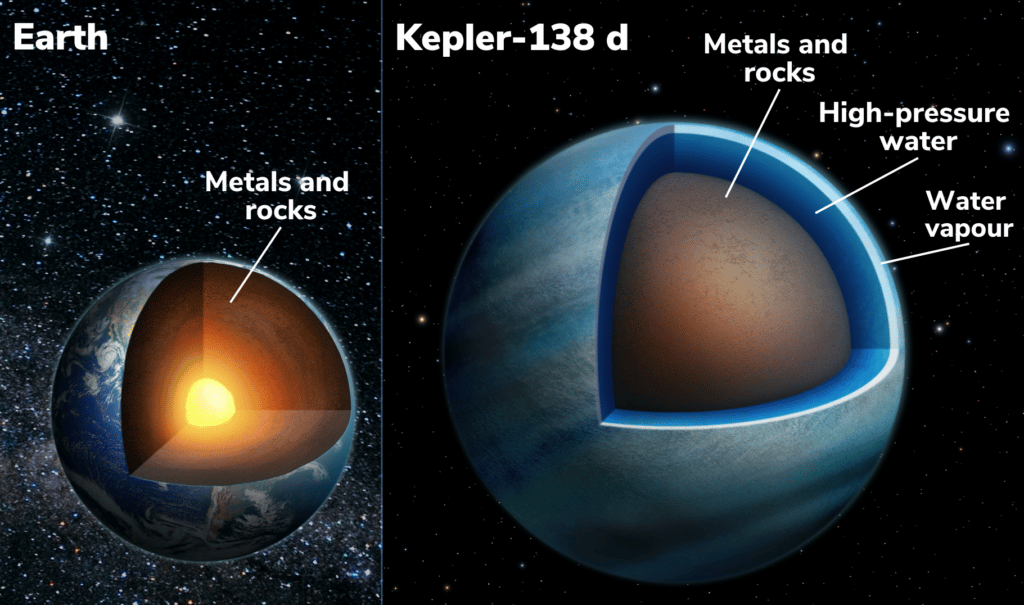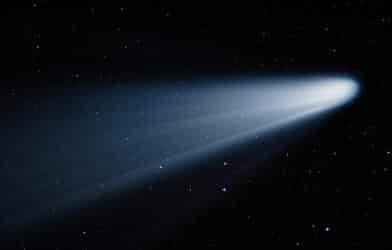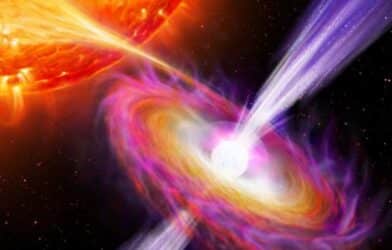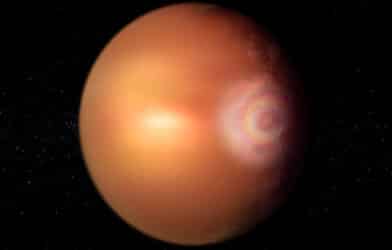Two planets 218 light years from Earth are waterworlds, according to new research. They are located in a system in the constellation Lyra, and are unlike any found in our solar system.
“We previously thought that planets that were a bit larger than Earth were big balls of metal and rock, like scaled-up versions of Earth, and that’s why we called them super-Earths,” says co-author Dr. Bjorn Benneke, of the University of Montreal, in a statement. “However, we have now shown that these two planets, Kepler-138c and d, are quite different in nature: a big fraction of their entire volume is likely composed of water. It is the first time we observe planets that can be confidently identified as water worlds, a type of planet that was theorized by astronomers to exist for a long time.”
The planets were discovered by NASA’s Kepler Space Telescope. They are about one-and-a-half times the size of Earth – and may not have oceans directly at the surface.
“The temperature in Kepler-138c’s and Kepler-138d’s atmospheres is likely above the boiling point of water, and we expect a thick, dense atmosphere made of steam on these planets,” says lead author Caroline Piaulet, a PhD student at the same lab. “Only under that steam atmosphere there could potentially be liquid water at high pressure, or even water in another phase that occurs at high pressures, called a supercritical fluid.”
Water wasn’t directly detected. But computer models showed up to half their volume is made of materials lighter than rock and heavier than hydrogen or helium. The latter constitute the bulk of gas giant planets like Jupiter. The most likely candidate is water.
It is believed the mysterious planets resembled the outer solar system’s icy moons that are also largely composed of water surrounding a rocky core.

“Imagine larger versions of Europa or Enceladus, the water-rich moons orbiting Jupiter and Saturn, but brought much closer to their star,” says Piaulet. “Instead of an icy surface, Kepler-138 c and d would harbor large water-vapor envelopes.”
The planets are orbiting a red dwarf star named Kepler-138. The findings are based on dips in starlight as they pass by.
There are two other planets in the system known as Kepler-138d and newly discovered Kepler-138, which is is small and farther from its star than the three others.
It is in the habitable zone of its star, a temperate region where a planet receives just the right amount of heat from its cool star to be neither too hot nor too cold to allow the presence of liquid water.
The study also found the two waterworlds Kepler-138c and d are “twin” planets, with virtually the same size and mass. The closer-in planet, Kepler-138b, on the other hand is a small Mars-mass planet, one of the smallest exoplanets known to date.
“As our instruments and techniques become sensitive enough to find and study planets that are farther from their stars, we might start finding a lot more water worlds like Kepler-138 c and d,” adds Dr. Benneke.
The research is published in the journal Nature Astronomy.







-392x250.png)



